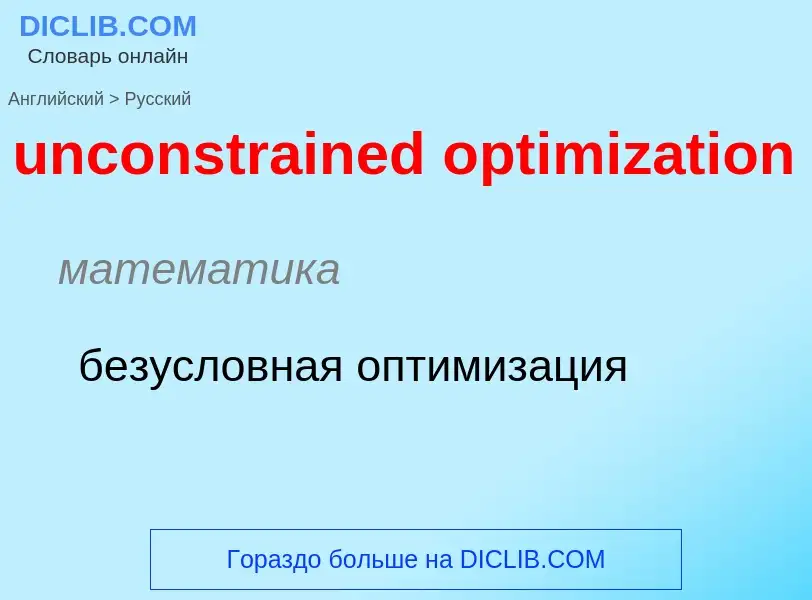Перевод и анализ слов искусственным интеллектом ChatGPT
На этой странице Вы можете получить подробный анализ слова или словосочетания, произведенный с помощью лучшей на сегодняшний день технологии искусственного интеллекта:
- как употребляется слово
- частота употребления
- используется оно чаще в устной или письменной речи
- варианты перевода слова
- примеры употребления (несколько фраз с переводом)
- этимология
unconstrained optimization - перевод на русский
математика
безусловная оптимизация
математика
условная оптимизация
оптимизация при наличии ограничений
Определение
Википедия
In the field of computational chemistry, energy minimization (also called energy optimization, geometry minimization, or geometry optimization) is the process of finding an arrangement in space of a collection of atoms where, according to some computational model of chemical bonding, the net inter-atomic force on each atom is acceptably close to zero and the position on the potential energy surface (PES) is a stationary point (described later). The collection of atoms might be a single molecule, an ion, a condensed phase, a transition state or even a collection of any of these. The computational model of chemical bonding might, for example, be quantum mechanics.
As an example, when optimizing the geometry of a water molecule, one aims to obtain the hydrogen-oxygen bond lengths and the hydrogen-oxygen-hydrogen bond angle which minimize the forces that would otherwise be pulling atoms together or pushing them apart.
The motivation for performing a geometry optimization is the physical significance of the obtained structure: optimized structures often correspond to a substance as it is found in nature and the geometry of such a structure can be used in a variety of experimental and theoretical investigations in the fields of chemical structure, thermodynamics, chemical kinetics, spectroscopy and others.
Typically, but not always, the process seeks to find the geometry of a particular arrangement of the atoms that represents a local or global energy minimum. Instead of searching for global energy minimum, it might be desirable to optimize to a transition state, that is, a saddle point on the potential energy surface. Additionally, certain coordinates (such as a chemical bond length) might be fixed during the optimization.

